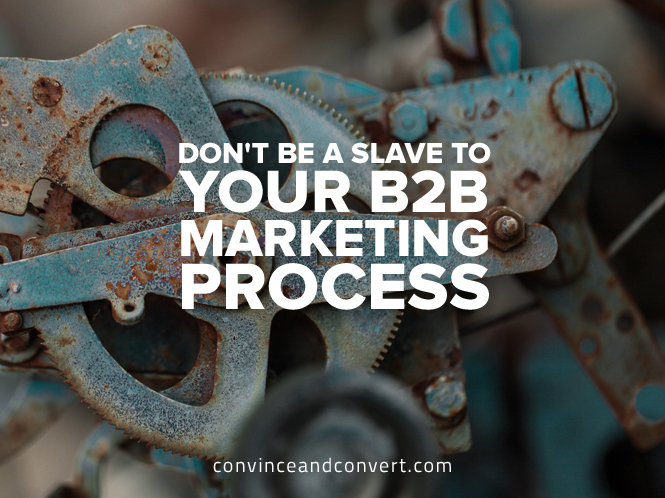It’s an exciting time to be a B2B marketer. Powerful data sources are fueling a number of new solutions that make big promises to impact our ability to generate pipeline faster. There’s a lead generation provider telling you that they can deliver a warmer lead. There’s a new vendor telling you that they can personalize your website to drive more engagement. There’s an intent data provider or data science company promising a more actionable list for Account-Based Marketing (ABM). Marketers are inundated with cool new ways to approach demand generation.
One of the biggest obstacles to implementing these new ideas is inertia—resistance in the form of, “It doesn’t work that way.” Marketers have spent many cycles creating a process related to nurture, inbound, outbound, inside sales, and structure around how these tactics play together. Often, the structure that’s been set up works pretty darn well, so to change it for the sake of a new idea is a big challenge.
The question that always comes up is this: How can you make sure you’re not being a slave to your current process and resource allocation, and find ways to test what’s possible?
Take a Startup Approach to Your Marketing
First thing’s first: Think like an entrepreneur. Marketers are responsible for revenue. There are tons of vendors that are promising you faster time to revenue. Test them. The answer to “more revenue, faster” is out there, but you cannot find it unless you’re relentlessly curious, open, and nimble. If it sounds challenging, it is, but there are some things that can make it easier.
Use Email as a Testing Ground
Email provides black and white results very quickly. For example, if a vendor is offering you a list of companies or “better” leads, consider engaging that list via email with a down-the-funnel content offer, and then measuring its performance against a control group.
All too often, these “better” leads and lists are usually validated via sales. This can often take a long time to validate and, at best, result in non-data driven feedback. At worst, the result in a lack of faith in new marketing initiatives. Platforms like LinkedIn, Taboola, and Outbrain can also be good testing grounds for enhanced ABM lists. All of these platforms have added the ability to target a list of accounts and drive traffic to first-party marketer landing pages, meaning you can get immediately measurable results.
Identify an Advocate or Ally on Your Sales Team
If you’ve exhausted email testing, and sales engagement is needed to make a major investment, find yourself a sales rep who’s open-minded and willing to test and help you track results scientifically.
How often do you hear vendors say, “Get buy-in from sales,” or, “Align with sales,” when you know it’s not that easy. Find that one advocate who is willing to try something new and recognizes the benefit to them. It can do wonders in terms of commercial investment and is great internal PR for marketing.
Conduct a ‘Covert’ A/B Lead Test
Can’t find your sales-side partner-in-crime? Email down-the-funnel content to the “better” leads, and set up a campaign that automatically routes responses to a sales person. Even though the lead may not have had two to three touches in marketing automation, they responded to a down-the-funnel email, so you’re really just manually skipping some steps to test the creation of pipeline.
It can be even better if sales doesn’t know about the test, because:
- You’re not on the hook for a game-changing promise, and
- They won’t approach the exercise with any bias (good or bad).
You can compare the pipeline generated from the campaign with that generated from leads that matriculated through the current nurture process.
Get Your Vendors to Work for You
Most importantly, work with vendors that get it. You’re investing time and a little bit of money, and you’re working against your own process and resource allocation—the very least your vendors can do is to be flexible to help you prove the case of ongoing engagement. If their product is too clunky to support a reasonable proof of concept period and pricing, then chances are they’ll never be able to scale across your processes anyway. Your vendor partners are, literally, entrepreneurs, so they should be willing to join you on your path to finding revenue faster and earn their way into your strategy.


No comments:
Post a Comment